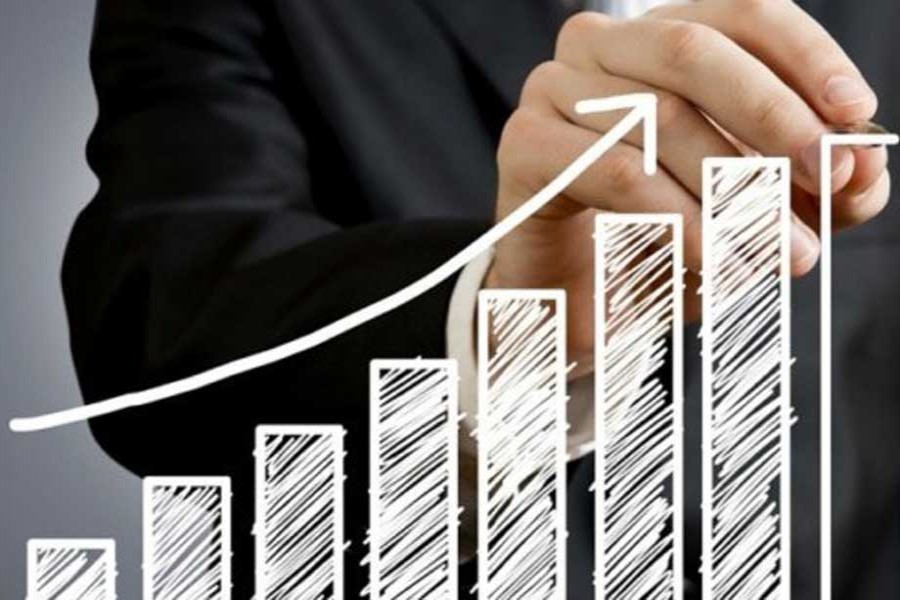Although the Bureau of Statistics (BBS) is claiming that the country's economy is expected to achieve 7.65 per cent growth in the current financial year, economic analysts tend to believe that the real economic activities are not compatible with the official figures.
The bureau says the gross income per head is also set to pick up by 8.82 per cent to $1,752 in the FY 2017-18 from $1,610 in the last fiscal with strong support from the industrial and agriculture sectors. The gross domestic product (GDP) growth of the country at constant price has broken all previous records in Bangladesh's history, it said.
The planning minister, at a press briefing this week, claimed that investment, exports, and remittances have picked up this year along with the impressive industrial sector growth. These, among others, have contributed to the expansion of the economy, he added.
Analysts say if the incremental capital output ratio (ICOR) and the investment-GDP ratio are calculated, the provisional growth data doesn't match. According to the last four years' ICOR calculation, if Bangladesh wants to grow at 7.65 per cent, its investment-GDP ratio will have to be 34.85 per cent. But the provisional data for the investment-GDP ratio is 31.47 per cent. So, the 7.65 per cent growth is not realistic if the ICOR is considered, they claimed.
There are also doubts over the agricultural growth in the current fiscal when the country's northern region and north-eastern haor regions had experienced flash floods resulting in considerable damage to the crops. Huge imbalance also exists between export and import figures. The real estate sector is in disarray over the last few months due to higher price of steel, cement and stones. The banks are facing liquidity crisis and the foreign exchange rate is unstable. With all these constraints, it is really hard to expect such a robust growth.
It is interesting to note here that the World Bank had earlier painted a brighter picture for Bangladesh's economy for the next two fiscal years, pinning hopes on strong domestic demand, exports, investment and remittance. The Global Economic Prospects, a flagship report of the World Bank Group, said economic activity would grow at an average of 6.7 per cent a year over fiscals 2018-2020, benefiting from strong domestic demand and strengthening exports.
However, the WB also witnessed some downside risks to the outlook for Bangladesh that include fiscal slippages and a setback in implementation of reforms to improve corporate and financial sector balance sheets. Slippages relating to upcoming elections and weak tax revenues could also derail fiscal consolidation efforts. Remittance inflows have been subdued recently due to fiscal consolidation and growth slowdowns in the Middle East.
Whatever the growth rate projection for the country, the government needs to take some precautionary measures to face unpredicted disasters arising out of the effects of any global slowdown. It needs to adopt a flexible budget for the next fiscal year so that it could include priorities later to safeguard the economy from the impacts of recession.
The government also needs to streamline its expenditure to create more jobs to help poor get out of poverty. One of the development challenges of the government should be to raise expenditure in the public sector through annual development programme (ADP) and channel more funds to the market.
There is no denying that the economic growth means more output, employment, income and as a resultant effect, more well-being for the people. Most of the countries of the world want to pursue higher growth path. Yet, economic growth alone cannot bring prosperity to a nation. This is, of course, a necessary ingredient but not sufficient for people's welfare. Any growth that reduces poverty faster, produces less inequality and absorbs surplus labour to a desirable degree could be construed as 'good' growth.
However, in addition to output growth -- and for poverty reduction purposes -- one needs to look at the impacts of that growth on employment and real wage. Likewise, industrial growth cannot reduce poverty unless growth is employment-intensive and inequality-reducing in nature.


